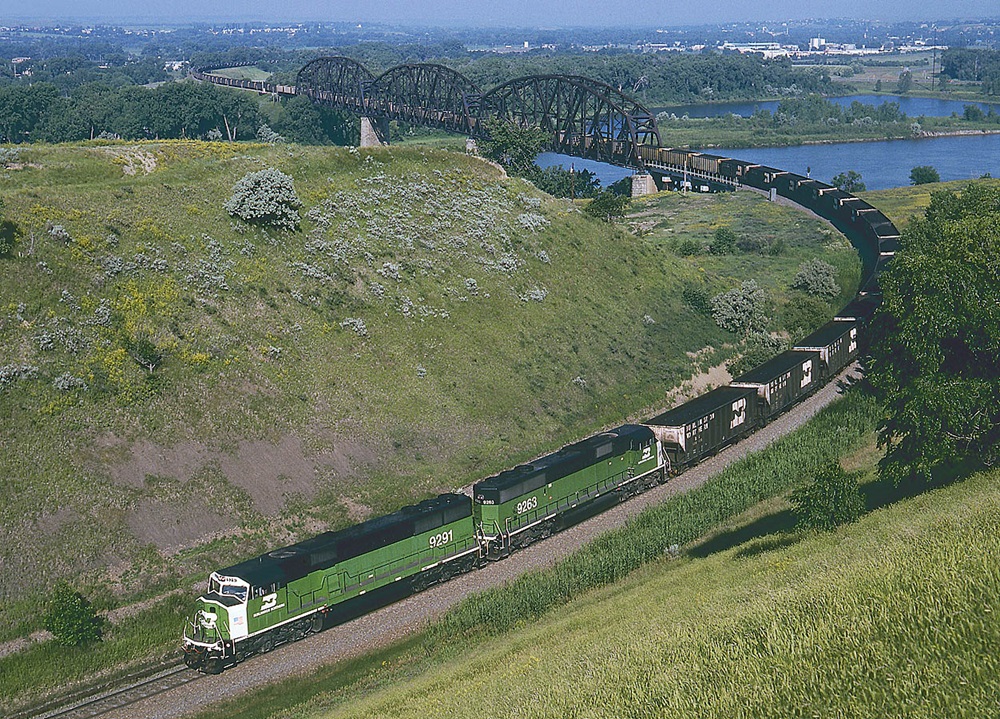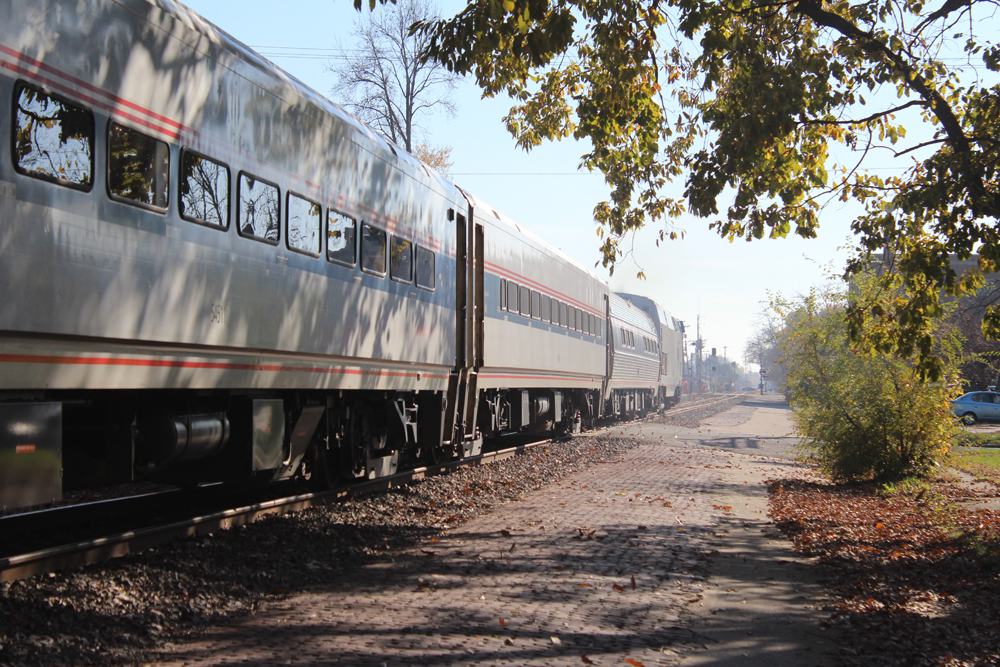
(Tom Danneman)
MARCO ISLAND, Florida – BNSF Railway’s capital plans for 2019 include a cluster of major bridge projects in Washington state, and pairs of bridges near Quenemo, Kan., and on the Hannibal subdivision in Missouri.
Not included is a bridge over the Missouri River at Bismarck, N.D., and therein lies a tale that serves an an example of the challenge faced by BNSF, and other railroads, in planning capital projects, as told by Craig Rasmussen, the railroad’s assistant vice president of engineering services and structures.
Rasmussen outlined the story of the bridge during his presentation Tuesday at the National Railroad Construction and Maintenance Association Conference, as he eschewed the normal approach of listing project plans and budgets for 2019 to look at larger trends,
The Missouri River bridge was originally built by the Northern Pacific in 1882; the superstructure was replaced in 1905, but the original bridge piers are still in use. Given its age, the bridge now has a 25-mph speed restriction, and the railroad would like to replace it.
“I’m not asking for a federal grant,” Rasmussen said. “I’m not asking for any special favors. I’m asking for something that would otherwise be just a normal bridge owner who wants to replace his bridge. It sounds easy enough, but there are some constraints.”
The bridge, of course, has to be built where the railroad is. “You can’t just go 10 miles away, because I’ve got to build the track to get there,” he said. “That makes no economic sense. … There’s all sorts of other constraints. There’s neighborhoods, there’s other public land, there’s a water reservoir. There’s things you just can’t touch. … You’ve got to build the bridge immediately adjacent to the bridge that’s there today.”
But those 1882 piers are non-reinforced stone masonry. “That was the best they had at the time, and frankly, it’s served us really well,” he said. “But I’m not going to build new substructure immediately adjacent to that. There’s too much messing around with what that’s sitting on down there. So I have to offset the new piers.
“So the reality is that now you get these conflicting interests. You’re in the Missouri River; I’m going to offset the piers from where they are today; so now I’ve got a hydraulic impact; I’ve got a navigation impact. So the answer is that, to set that up, I’ve just got to take the old bridge down.”
Again, not that simple. There’s a group, Friends of the Rail Bridge, that wants to save the bridge because of its history and convert it to a trail bridge.
“Half the time, I say, I don’t really care,” Rasmussen said. “But in this case, i do, because … that bridge is accumulating cycles every day, and as this goes on, the reason this is important to everybody in this room, is that something has to happen, and the reality is that nothing goes forward.”
Rasmussen displayed a slide showing rules of Section 106 of the National Historic Preservation Act, which requires consideration of any “federal undertaking” on a historic property — and a “federal undertaking” includes any activity requiring government permits and approvals. Because of the Missouri is a navigable waterway, and the U.S. Coast Guard must approve the construction, the bridge project qualifies. The Section 106 rules require notification of appropriate parties, identification of potential historic properties, assessment of impact on these properties, and the resolution of “adverse effects that could avoid, minimize, or mitigate these impacts.”
“It sounds pretty innocuous, right? … How hard can be it?” Rasmussen said. “Well, the answer is, it’s really hard, because of the fact because there are no rules. … We have a permitting landscape that we collectively call the ‘moving goalposts’ method, because we don’t know what the rules are, because the rules change.”
And so, trying to navigate that permitting landscape, the bridge plans remain unresolved, and the bridge is not part of BNSF’s 2019 capital plan. But the process continues.
“The answer in Bismarck,” Rasmussen said after his presentation, “has been bringing a lot of different parties together that have different interests. And that has been the challenge for us. The regulations are in conflict with one another, because you can’t do something that solves all conflicts. As this thing has gone on, we’ve been communication with each of the regulating agencies; we’ve obviously been talking with the political representatives to make sure we’re trying to push this forward.
“Ultimately, the Coast Guard is the lead agency, and it’s a matter of us ensuring that we can answer all the questions we can, and at the end of the day we need to be able to make a decision on what we do going forward.”
Rasmussen estimated the process has been going on for at least three years, with multiple agencies. “I wish I could tell you a timeline for what the outcome is, but we want to continue to be as responsive as we can.”
He is hopeful that the permitting will be done this year, but after that, there are a couple of years’ work to build the bridge.
“It’s a massive project,” he said. “There’s seasonality that’s required to it, as well, because of the flow of the Missouri River. Once we get the green light to go from the permit process, then it’s a matter for us to be able to line up our capital to do it, which is again, the predictability part … where we understand exactly what the timeline is, that allows us to plan the asset renewal, exactly how we want to do it to be advantageous for us.”
Meanwhile, the cost to replace the bridge rises. The Bismarck Tribune, in an article on the effort to save the current bridge, calls the new one a $40 million project. What will it be when it’s actually built?
“Every year that goes by and I don’t build something, it costs me that much more,” Rasmussen said during his presentation.
And so, the bridge project stands an example of what Rasmussen called “a mega-trend” for 2019: the complexity of permitting is outpacing the ability of owners to make reasonable investment decisions.














Getting this bridge built is kind of like getting a building permit to build a house in CA except in a much bigger scale. So often with government entities there is no penalty for saying know or for finding new hoops for the builder to jump through. Throw in outside interests who don’t want something built for what ever reason and you have a real problem getting anything good built.
Great photo! That BN green looks better today than it even did back then.
It took BNSF three years or more to get all their permits to double track Abo Canyon. A lady lawyer and neighboring rancher fought to the end. One claim was the line hadn’t been modified since it was built so it was an historical site that couldn’t be upgraded.
Why the US is falling behind.